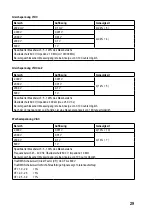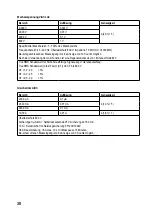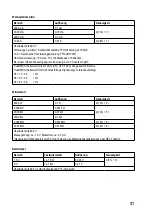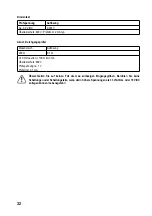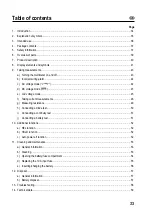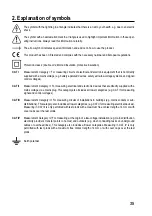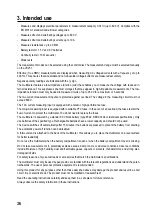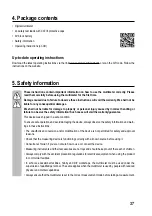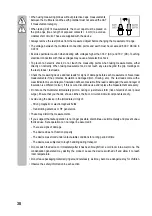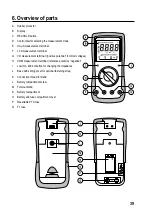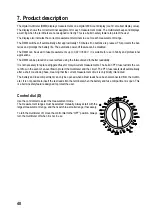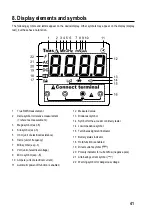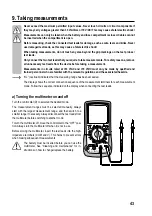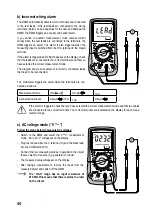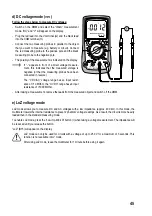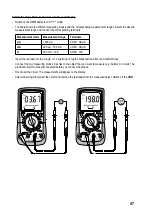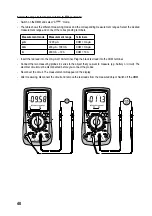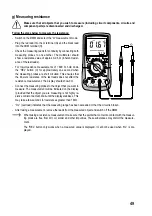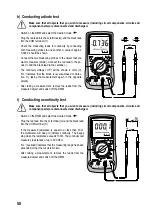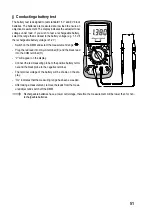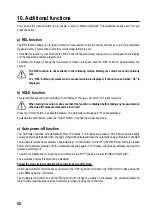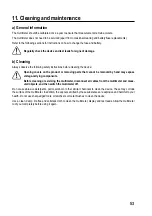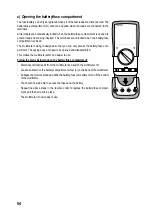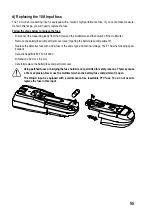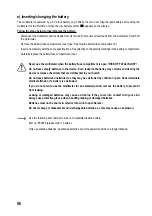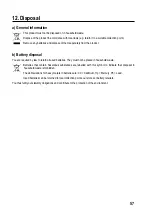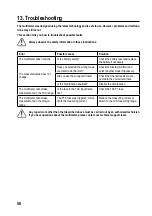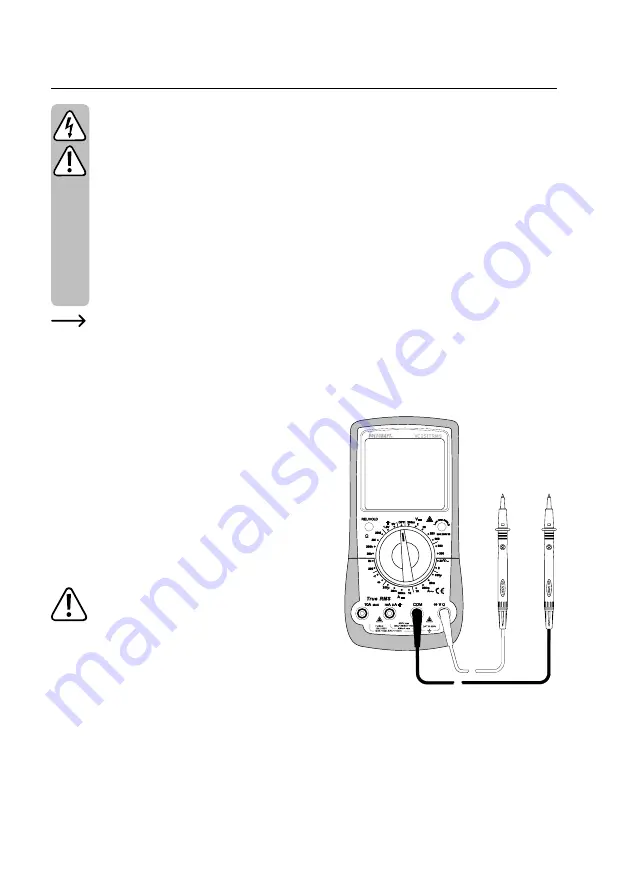
43
9. Taking measurements
Never exceed the maximum permitted input values. Never touch circuits or circuit components if
they may carry voltages greater than 33 V/ACrms or 70 V/DC! This may cause a fatal electric shock!
Measurements can only be taken when the battery and fuse compartment is closed. Cables cannot
be inserted when the compartment is open.
Before measuring, check the connected test leads for damage, such as cuts, tears and kinks. Never
use damaged test leads, as this may cause a fatal electric shock!
When taking measurements, do not touch any area beyond the grip markings on the test probes /
test leads.
Only connect the two test leads that you require to take measurements. For safety reasons, remove
all unnecessary test leads from the device before taking a measurement.
Measurements in circuits rated at >33 V/AC and >70 V/DC must only be made by qualified and
trained personnel who are familiar with the relevant regulations and the associated hazards.
“OL” (overload) indicates that the measuring range has been exceeded.
The display shows the correct connection sequence of the measurement terminals for each measurement
mode. Follow the sequence indicated on the display when connecting the test leads.
a) Turning the multimeter on and off
Turn the control dial (D) to selected the desired mode.
The measurement ranges must be selected manually. Always
start with the largest measurement range, and then switch to a
smaller range if necessary. Always disconnect the test leads from
the multimeter before switching to another mode.
To turn the multimeter off, move the control dial to the “OFF” posi-
tion. Always turn the multimeter off when it is not in use.
Before storing the multimeter, insert the test leads into the high-
impedance terminals (COM and V). This helps to prevent errors
when making subsequent measurements.
The battery must be inserted before you can use the
multimeter. See “Cleaning and maintenance” for in-
structions on how to change/replace the battery.

